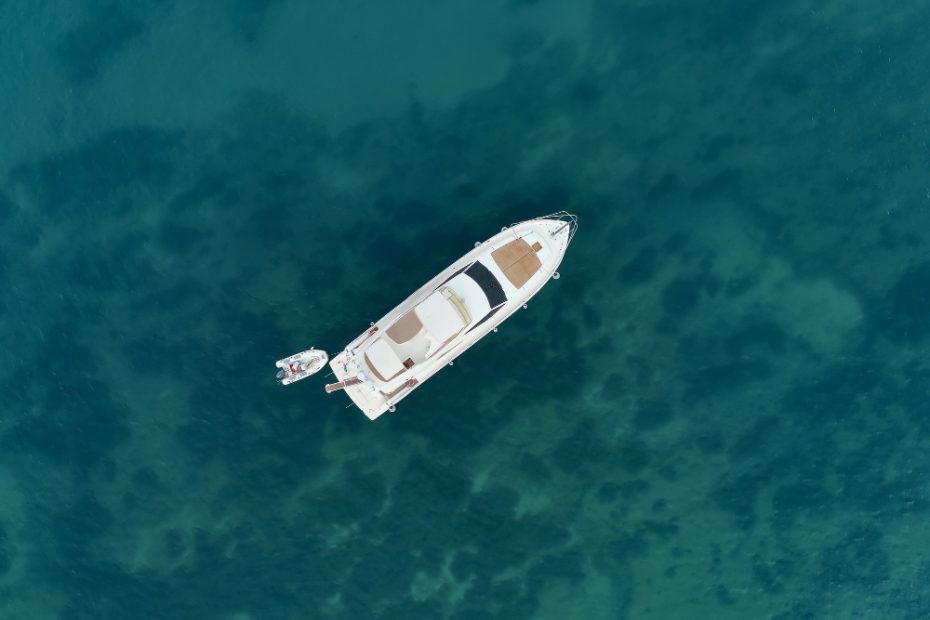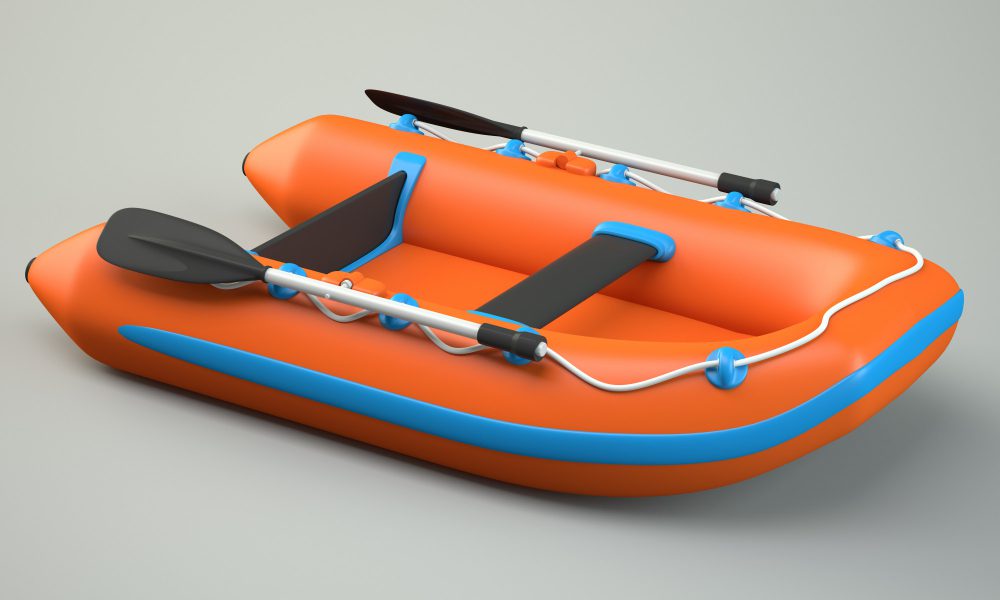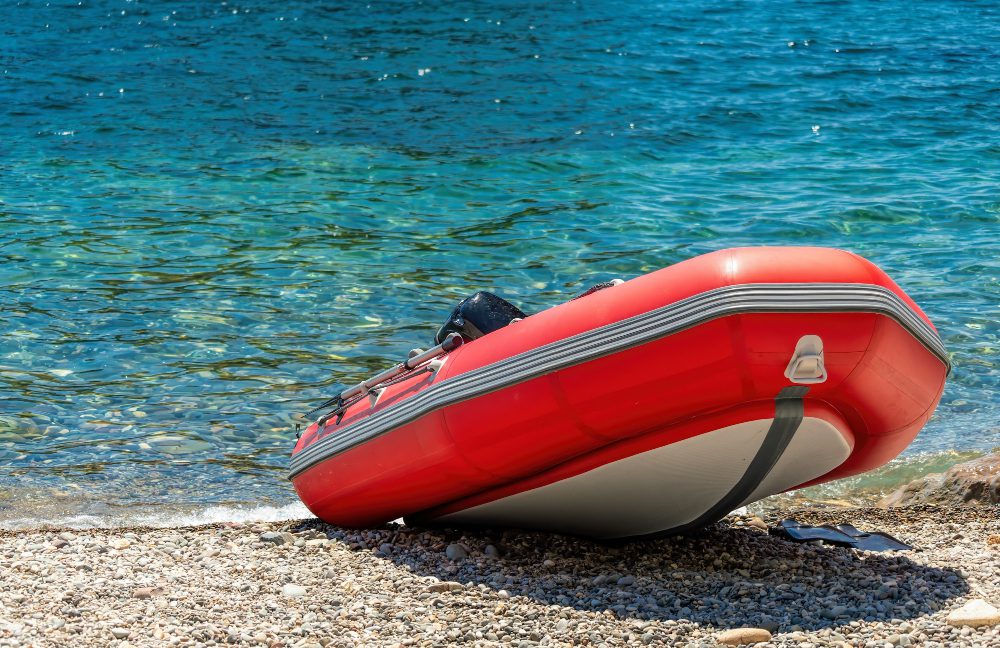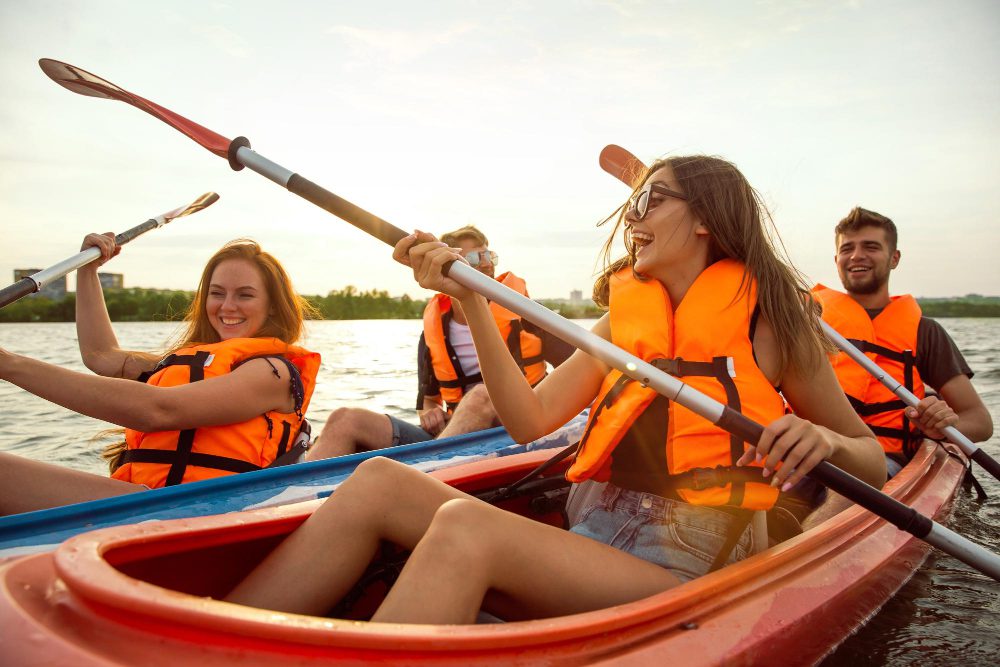What are Hawaiian boats called?
Hawaii, known for its stunning beaches and rich maritime culture, has a unique and fascinating history of seafaring. The traditional boats used by the indigenous people of Hawaii are commonly referred to as “outrigger canoes” or “waʻa” in the native language.
The significance of Hawaiian boats
Hawaiian boats hold immense cultural significance for the people of Hawaii. These canoes were vital to their survival and way of life, serving as a means of transportation, fishing, and exploration. The skillful craftsmanship and design of these boats reflect the deep connection between the Hawaiians and the ocean.
The design and construction
Outrigger canoes are characterized by their unique structure, which includes a main hull and an outrigger, or an ama, on one side. The outrigger provides stability and helps prevent capsizing in rough waters. These canoes are typically made from native Hawaiian materials such as koa wood or wiliwili wood. The hull is carefully carved and shaped using traditional techniques passed down through generations.
Size and types
Hawaiian boats come in various sizes, ranging from small vessels used for fishing to larger canoes designed for long-distance travel. Some notable types of Hawaiian boats include:
- Waʻa kaulua – Double-hulled voyaging canoe used for long-distance navigation.
- Waʻa peleleu – Single-hulled fishing canoe with an outrigger.
- Waʻa kaulua peleleu – Double-hulled fishing canoe with an outrigger.
The art of navigation
Navigation played a crucial role in the success of Hawaiian voyagers. They relied on their knowledge of the stars, ocean currents, and natural landmarks to navigate across vast distances. Hawaiian navigators were skilled in celestial navigation using the position of stars, especially the North Star, as well as observing the flight patterns of birds and the behavior of marine life.
“The Hawaiian voyaging canoes were not just vessels; they were extensions of our ancestors who first settled these islands. They carried the dreams and stories of an entire culture.” – Keau George, Hawaiian navigator.
Revival and preservation
In recent years, there has been a remarkable revival of interest in traditional Hawaiian boats. Organizations such as the Polynesian Voyaging Society have dedicated themselves to the preservation and revival of traditional navigation techniques. The famous Hōkūleʻa, a replica of a waʻa kaulua, has embarked on numerous voyages, spreading awareness about the importance of preserving Hawaiian culture and the environment.
Celebrating Hawaiian heritage
Today, Hawaiian boats are not only revered for their historical significance but also celebrated as symbols of Hawaiian heritage. Races and festivals centered around these canoes showcase the skill and athleticism of modern-day Hawaiians, keeping the traditions of their ancestors alive.
In conclusion, Hawaiian boats, also known as outrigger canoes or waʻa, are not merely vessels but integral parts of Hawaiian culture and history. Their unique design, construction, and navigational prowess embody the deep connection between the people of Hawaii and the vast ocean that surrounds them. The ongoing efforts to revive and preserve these traditional boats ensure that their significance will continue to be appreciated for generations to come.
What is an Eskimo boat called?
Introduction
An Eskimo boat, also known as an umiak or a qajaq, is a traditional Inuit vessel used for transportation and hunting in the Arctic regions. These boats have been integral to the Inuit culture for centuries, enabling them to navigate the icy waters and hunt marine animals for survival.
The Umiak
The umiak is a larger boat typically made of wooden frames covered with animal skins. It is designed to carry multiple people and large amounts of cargo such as hunting equipment, food, and materials. The umiak’s wide and stable construction allows it to withstand harsh weather conditions and rough waves.
The Qajaq
The qajaq, commonly known as a kayak, is a smaller and more streamlined boat designed for individual use. Unlike the umiak, it is typically made from a lightweight frame covered with stretched seal skin or other waterproof materials. The qajaq’s sleek design enables it to maneuver through narrow channels and hunt agile marine animals such as seals.
Significance in Inuit Culture
Eskimo boats hold immense cultural and historical significance for the Inuit people. They have been used for transportation, hunting, and communication among communities. Building and maintaining these boats is a skill passed down through generations, often involving community gatherings and shared knowledge.
Inuit Boat-building Techniques
Inuit boat-building techniques vary depending on the region and available resources. The frames are traditionally made from driftwood or bone, while the covering materials include seal skins or canvas. These materials are meticulously sewn together using natural fibers or modern synthetic threads.
Quotes from Inuit Elders
“The umiak and qajaq are not just boats to us; they represent our connection to our ancestors, our environment, and our way of life.”
Modern Adaptations
While traditional umiaks and qajaqs are still used by some Inuit communities, modern adaptations have been incorporated. These adaptations include the use of fiberglass or plastic frames and synthetic materials for covering. This allows for easier maintenance and increased durability in contemporary Arctic environments.
What are Samoan boats called?
The Traditional Boats of Samoa
Samoan boats, known as vaka, have a rich history in the Polynesian culture. These traditional outrigger canoes have been used by Samoans for centuries for fishing, transportation, and inter-island voyaging. The design of the vaka is unique, with a narrow hull and an extended side float called the ama. This design allows for stability and maneuverability, making it suitable for navigating the Pacific waters.
The Significance of Vaka
The vaka holds great cultural significance for the Samoan people. It is not only a means of transportation but also serves as a symbol of their connection to the ocean and their ancestors. The construction of a vaka involves traditional techniques passed down through generations, using materials such as wood, coconut fiber, and tree sap.
“The vaka is more than just a boat; it represents our heritage, resilience, and the spirit of voyaging.”
Vaka Types and Uses
There are several types of vaka used in Samoa, each with its own purpose. The va’aalo is a small fishing canoe primarily used for nearshore fishing. The va’aaloalo is a larger version used for longer fishing trips and sometimes for transportation between islands. For longer voyages, the va’atele is employed, capable of carrying more people and supplies.
Modern Adaptations
In recent times, modern materials like fiberglass have been incorporated into vaka construction, enhancing durability and reducing maintenance. Despite these adaptations, the traditional craftsmanship and knowledge behind building a vaka are still highly valued and preserved by the Samoan community.
Preserving the Vaka Culture
Efforts are being made to preserve and revive the vaka culture in Samoa. Organizations such as the Samoa Voyaging Society promote traditional navigation skills and organize voyages using vaka to reconnect Samoans with their seafaring heritage. These initiatives not only ensure the survival of traditional boat-building techniques but also contribute to the revival of Samoan cultural practices.
What is another word for canoe-like boat?
When it comes to watercraft, there are many different types and styles. One such style is the canoe-like boat, which is characterized by its slender shape and typically powered by paddles or oars. While “canoe-like boat” is a descriptive term, there are other names used to refer to this type of watercraft.
1. Kayak
A kayak is a small, narrow boat that is propelled by a double-bladed paddle. It typically has a covered deck with a cockpit, allowing the paddler to sit inside the boat. Kayaks are often used for recreational purposes and are popular for activities like touring, fishing, and whitewater rafting.
2. Rowboat
A rowboat, also known as a rowing boat, is a small boat that is propelled by oars. Unlike a kayak, a rowboat does not have a covered deck or cockpit. Instead, the rower sits on a bench or seat and faces the direction they are rowing. Rowboats are commonly used for leisurely activities like fishing or simple transportation across bodies of water.
3. Pirogue
A pirogue is a small, flat-bottomed boat that is commonly used in swampy or marshy areas. It is usually propelled by paddles or poles and can be made of various materials such as wood or fiberglass. Pirogues are commonly used for hunting, fishing, and transportation in areas with shallow waters.
4. Dugout Canoe
A dugout canoe is a type of boat that is carved from a single tree trunk. It has a hollowed-out interior and can be propelled by paddles or poles. Dugout canoes have been used by indigenous cultures for thousands of years and are still used in some parts of the world today for transportation and fishing.
5. Outrigger Canoe
An outrigger canoe is a canoe-like boat that has one or more lateral support floats called outriggers. These outriggers provide stability and balance to the boat, especially in rough waters. Outrigger canoes are commonly used in the Pacific Islands for transportation, fishing, and racing.
In conclusion, while “canoe-like boat” is a descriptive term, there are several other words that can be used to refer to this type of watercraft such as kayak, rowboat, pirogue, dugout canoe, and outrigger canoe. Each of these terms signifies specific characteristics or variations within this broader category of boats.
What is a lightweight narrow boat called?
A lightweight narrow boat is often referred to as a narrowboat. These boats are designed to navigate the narrow canals and waterways found in the United Kingdom. Narrowboats are typically long, slender vessels that were originally used for transporting goods across the canal network.
The history of narrowboats
Narrowboats have a rich history dating back to the 18th century when they were first used as working boats on the canals. They were primarily used to transport coal, iron, and other raw materials between towns and cities. Over time, as canals fell out of commercial use, narrowboats became popular for leisure cruising.
Characteristics of narrowboats
Narrowboats are designed to be lightweight and narrow in order to navigate the narrow canals and locks. They typically have a flat bottom and a shallow draft, allowing them to maneuver through shallow waters. Narrowboats are also known for their distinctive shape, with a long, slender hull and a pointed or “v”-shaped bow.
Types of narrowboats
There are several different types of narrowboats, including traditional stern narrowboats, cruiser stern narrowboats, and semi-traditional stern narrowboats. Each type has its own unique features and layout. Traditional stern narrowboats have a small open deck at the rear, while cruiser stern narrowboats have a larger open deck. Semi-traditional stern narrowboats have a compromise between the two.
Living on a narrowboat
Narrowboats are often used as homes by individuals and families seeking a unique and alternative lifestyle. Living on a narrowboat allows people to enjoy the tranquility of the waterways while still having the convenience of modern amenities. Many narrowboats are equipped with kitchens, bathrooms, bedrooms, and even living areas.
Pros and cons of narrowboat living
Living on a narrowboat has its advantages and disadvantages. Some of the pros include a close connection to nature, a sense of freedom and adventure, and a strong sense of community among narrowboat owners. However, there are also challenges such as limited space, maintenance requirements, and the need to constantly move the boat to comply with canal regulations.
What is a small Cajun boat called?
Introduction
If you’ve ever been to the Louisiana bayous or seen pictures, you may have noticed the unique boats gliding through the waters. These small, nimble vessels are integral to the Cajun culture and their way of life. But what exactly are they called?
The Pirogue
The small Cajun boat is known as a pirogue. Pronounced “pee-roh,” this traditional watercraft has deep roots in Cajun history. The pirogue is a type of flat-bottomed boat that is typically made from cypress wood. Its design allows it to navigate shallow waters, making it perfect for navigating the bayous and swamps of Louisiana.
Origin and Uses
The term “pirogue” comes from the French word “pirougue,” which means dugout canoe. The boat was initially used by Native American tribes for fishing and transportation. Over time, Cajuns adopted the pirogue as their own and incorporated it into their daily lives. Today, pirogues are still widely used for activities such as fishing, hunting, and even as recreational boats.
Features and Construction
Pirogues are typically constructed using a single tree trunk, with the inside hollowed out to create a spacious hull. To make them more durable and resistant to water, many modern pirogues are now made from fiberglass or aluminum. Despite these material changes, the overall shape and design remain true to the traditional pirogue.
The Versatility of Pirogues
One of the reasons pirogues are so popular is their versatility. These small boats can be easily maneuvered through narrow waterways and are light enough to be carried over land for portages. Pirogues are also known for their stability, making them ideal for hunting and fishing excursions where balance is crucial.
“The pirogue’s design is perfectly suited for the unique environment of the Louisiana bayous.”
Conclusion
The Eskimo boat, whether it be an umiak or a qajaq, serves as an essential tool for the Inuit people, enabling them to navigate the challenging Arctic waters and sustain their way of life. These boats represent a rich cultural heritage and a deep connection to the land and the surrounding environment.
Samoan boats, or vakas, represent the deep connection Samoans have with their marine environment and ancestors. These magnificent vessels are not only practical for fishing and transportation but also serve as a cultural symbol of resilience and heritage. As efforts continue to preserve and revive the vaka culture, the significance of these traditional boats will remain deeply ingrained in Samoan society.
Vaka Types and Uses – Table
| Vaka Type | Primary Purpose |
|---|---|
| Va’aalo | Nearshore fishing |
| Va’aaloalo | Longer fishing trips, transportation |
| Va’atele | Longer voyages, carrying more people and supplies |
Preserving the Vaka Culture – List
- Samoa Voyaging Society promotes traditional navigation skills.
- Organizes voyages using vakas to connect Samoans with their seafaring heritage.
- Preservation efforts focus on traditional boat-building techniques.
- Revival of cultural practices related to vakas.
In conclusion, a lightweight narrow boat is commonly known as a narrowboat. These vessels have a fascinating history and are designed to navigate the narrow canals of the United Kingdom. Whether used for leisure cruising or as a permanent home, narrowboats offer a unique and fulfilling way of life for those who choose to embrace it.
The small Cajun boat known as a pirogue holds significant cultural and historical importance for the Cajun people of Louisiana. Its versatility and adaptability make it an essential tool for navigating the bayous and swamps. Next time you find yourself in Louisiana, keep an eye out for these iconic vessels gliding through the waters.



